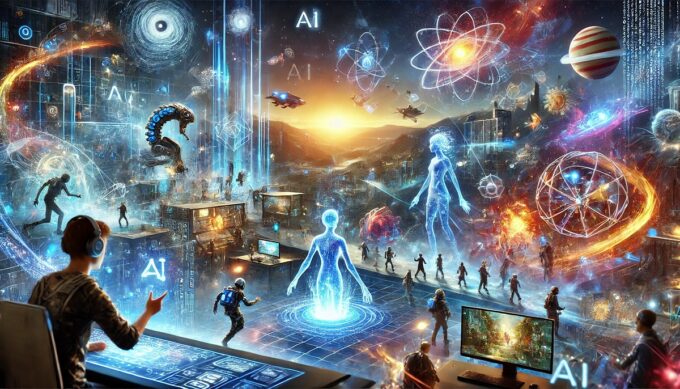The rise of virtual worlds has shifted from simple pixelated environments to fully immersive spaces that rival traditional video games in creativity and depth. Platforms like Second Life have thrived for more than two decades precisely because of user-driven creation.
Today, with the rapid improvement of 3D asset production, these virtual spaces are transforming into complex ecosystems where commerce, culture, and creativity blend seamlessly. The question many creators now ask is not whether 3D assets matter, but how far they can push what’s possible.
The Role of 3D Assets in Expanding Virtual Worlds

Source: 618media.com
Every object, avatar, and building inside a virtual world exists because someone designed it. Unlike static websites or social platforms, environments such as Second Life, OpenSim, and newer metaverse spaces depend on constant contributions from their users. 3D assets are the backbone of this ecosystem, giving shape to everything from fashion collections to sprawling cities.
This reliance on user-made content explains why creators invest heavily in tools that help them model faster, with higher quality. Instead of depending on prebuilt templates, they can craft personalized items that reflect both artistic vision and community demand.
For many, the ability to monetize these creations through virtual marketplaces adds an entrepreneurial edge that pushes standards even higher.
From Concept to Reality: Smarter Tools for Creation
In the past, creating a detailed 3D model often required weeks of technical work. Today, new workflows have made the process faster and more accessible.
One major breakthrough is the rise of AI-driven tools that allow creators to transform sketches or even images into 3D-ready files. For example, an image to 3d model AI tool can generate a starting point for detailed objects, cutting down on manual modeling hours.
This shift doesn’t just reduce effort, it lowers the barrier for new designers entering virtual economies. Someone with strong artistic ideas but limited technical expertise can now bring their visions to life without spending months learning advanced software.
In turn, this broadens the diversity of content across platforms like Second Life and emerging metaverse hubs.
Virtual Economies Built on Digital Craftsmanship

Source: forbes.com
The commercial backbone of virtual platforms relies heavily on creators. In Second Life alone, user-to-user transactions exceed hundreds of millions of dollars annually. That volume exists because players pay for experiences and items they couldn’t create themselves. Whether it’s a luxury villa on a private island or a set of custom avatars, 3D assets fuel the economy.
Key areas where digital craftsmanship thrives include:
- Fashion and Accessories: Virtual clothing is a billion-dollar industry across gaming and VR, with Second Life designers at the forefront of wearable 3D assets.
- Architecture and Interiors: Creators design homes, clubs, galleries, and entire cities that others purchase or rent.
- Props and Tools: From vehicles to working scripts inside objects, these assets enhance daily interactions in-world.
Each of these areas reflects real-world industries but with more flexibility and creative freedom. For many designers, the revenue from selling 3D assets inside a platform becomes a legitimate business.
How Realism Shapes Immersion
One of the reasons 3D assets are so vital is their role in creating immersion. Low-quality or flat textures break the illusion of a living environment, while realistic modeling convinces users that their digital life carries weight and presence.
Advances in materials, lighting, and rigging mean that avatars no longer move stiffly but with fluid gestures, and environments glow with life-like detail.
This realism also carries social weight. People attend virtual concerts, art exhibitions, and even business meetings inside worlds like Second Life. When the surroundings feel authentic, the event itself feels more engaging.
It’s no coincidence that major brands experimenting in the metaverse hire professional 3D artists to represent them with credibility.
Collaboration and Community as Growth Engines

Source: medium.com
Unlike traditional video games developed by a central studio, virtual worlds are living projects powered by community. Creators often collaborate to build shared spaces, combining individual 3D assets into cohesive environments.
A musician may host a show inside a virtual venue built by an architect, furnished with chairs from another creator, and attended by avatars dressed in custom fashion.
This layered collaboration demonstrates the network effect of 3D asset creation. The more assets exist, the easier it is to combine them into meaningful experiences.
Communities benefit from a constantly evolving pool of content, which keeps platforms like Second Life relevant year after year.
Education and Training in Virtual Platforms
3D assets are not limited to entertainment or commerce. Many universities, nonprofits, and organizations use Second Life and similar platforms for education. Virtual classrooms, laboratories, and interactive exhibits all rely on realistic digital models.
For students, walking through a 3D-rendered historical site or participating in a simulated engineering project provides a richer learning experience than static textbooks.
The versatility of assets ensures they can be repurposed across different contexts. A building initially designed as a nightclub can later serve as a digital classroom with only minor modifications.
This adaptability underscores why the skill of asset creation is increasingly seen as valuable beyond gaming.
Future Directions: The Expanding Potential of 3D Assets
Looking ahead, the significance of 3D assets will only increase as VR and AR platforms continue to blend with established virtual worlds.
Second Life is no longer alone; newer spaces like VRChat and Horizon Worlds rely on the same principle of user-driven creation.
What changes is the quality, scale, and interconnectivity of those creations.
Creators can expect more advanced AI tools, cross-platform marketplaces, and stronger monetization frameworks.
The concept of owning digital goods, supported by blockchain or NFT-style tracking, further expands the idea of virtual property rights.
Regardless of the technology behind it, the need for compelling 3D assets remains the core driver of these digital frontiers.



